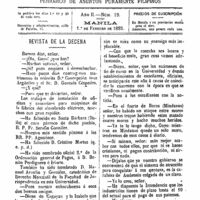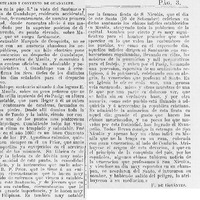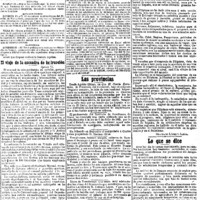Following Magellan’s arrival in Homonhon in 1521, the Spaniards made a surprising discovery. Even as the Age of Exploration (1400s-1600s) carried the promise of new territories and peoples for the Europeans, the colonizers noticed that a foreign actor had already made economic and political inroads in the archipelago: Islam. By 1521, it was only less than three decades after Christian forces in the Iberian Peninsula had taken Muslim-held Al-Andalus, in southern Spain. Yet by the 1500s, Arab explorers and traders had established extensive trade networks that spanned from the Mediterranean to East- and Southeast Asia. Along these thriving networks came the spread of Islam, which at the time facilitated integration into lucrative trade networks and political alliances. Apart from Arab and Muslim traders, many Southeast Asian polities were integrated into China’s tributary system, with Chinese settlers and traders maintaining a consistent presence in archipelagic Southeast Asia.
The territories which would eventually come to be known as the Philippines can trace their etymology to the Spanish (Las Islas) Filipinas, a name given in honor of King Philip II of Spain. With the antecedents of Ferdinand Magellan's arrival in 1521 and the establishment of Spanish settlement in 1565, the islands came under the colonial administration of Spain, where the goals of "gold, glory and God" were pursued akin to their other colonial possessions. These objectives included, among others, the expansion of Christian civilization and the increase of access to trade and resources in the region and beyond. Seen from this colonial perspective, then, the presence of both Muslims and Chinese created a conflict of interests. Apart from the trade networks both groups were involved in, they represented non-pagan peoples that could derail efforts at conversion and economic dominance.Eventually, three legal categories arose based on socio-political and administrative purposes in the colony: indios, which referred to Christianized or pagan Austronesian subjects; moros, which referred to Muslim Austronesians; and sangley, which referred to peoples of Chinese descent living in the islands.
The Spanish did not take well the presence of Muslims in the region. For functionaries such as Melchor de Ávalos, judge at the Real Audiencia de Filipinas (Royal Audience of the Philippines), the policy towards Muslims in the Philippines had to be based on the assumption that they were an extension of Muslims in the Middle East, thus framing the encounter through the lens of Spain’s historical conflicts (Rodríguez- Rodríguez 2018, p. 91). In terms of attitudes, the “[c]onquerors considered Filipino Muslims to be an extension of Spain’s enemy par excellence” (Ibid., p. 88).
Even as peace treaties were signed between Spain and the Sultan of Sulu, the representation of social and cultural tensions with Muslims continued through cultural media, such as the theatrical form moro-moro, which depicts battles between Filipino Christians and Muslims (Angeles 2010), while also being represented in poems such as Balagtas’ Florante at Laura (1853), whose ending shows the characters Aladin and Flerida being converted into Catholicism.
As Moros continued the practice of raiding, as well as an active resistance against Spanish advances, discourses that othered Moros and highlighted their piracy and violence were propagated. These negative depictions stood in contrast to the self-presentation of the Spaniards and Christianity, which would come to be upheld by Filipino Christians.
Animosity between Filipino Christians and a perceived Moro enemy persisted well into 1800s. La Puya published in 1883 a fictional dialogue between a certain Goyo (also the nickname of Gregorio del Pilar) and an unnamed señor who insists that war against the Moros would not cease as long as even a single Moro remained on the island.
Ironically, the struggle with the Moros appeared in discourse even as the Philippines was trying to imagine itself as a nation –Filipino societal and intellectual elites, the ilustrados, would extend national inclusivity to Moros if they viewed the nation through the lens of lahi (the Tagalog term for ethnicity or race), but those who supported the idea of a Catholic civilization could not always easily co-opt the presence of Moros (Thomas 2012). Notably, there was little involvement from Moros themselves in any of these discourses.
While Moros were beset with dominant discourses that centered them in medieval narratives of Christianity facing off against Islam (see Donoso 2013), or that co-opted them into the nationalist struggle, the Chinese would face policies of segregation and suspicions of their continuing fealty to the mainland.
The Chinese had long maintained trade relations in the Philippines and a steady presence in the capital of Manila. Due to the proximity between the Philippines and China, and the large trade networks established with China, migration, trade, and fluid identities have long characterized the Chinese in the Philippines (Chu 2021). For the Spaniards, the significant role the Chinese played in trade would spur fears that engendered societal and political discrimination, for instance, through exclusionary policies and deportation (Chu 2002).
Those identified as sangley would be kept away from the rest of the population in Manila, in areas called parián, and given their own governor. But suspicions that local Chinese would support incursions of Chinese from the mainland into the Philippines culminated in mutual tensions and, eventually, the Parian Massacre in 1603, which resulted in an estimated 15 to 25 thousand deaths (Wills 1998 p. 360). The inability of the Spaniards to make clear distinctions between Chinese who were settled in the Philippines and those who were transitory, as well as to distinguish amongst their religions, was reflected in the nomenclature given to the Chinese in the Philippines: from the general term sangley, into sub-classifications such as sangley infiel and sangley Cristiano (to distinguish between non-Christians and Christians); sangley invernado and sangley radicado (to distinguish between transient and resident Chinese); mestizo de sangley (to distinguish offspring of intermarriage with indios), or, in terms of origin, such as between sangley and macanistas or macao, the latter of which arrived in the Philippines through Macao (Chu 2021). The various identities that were associated with the Chinese in the Philippines were often treated with suspicion about their true religious or political loyalties - such as in the article above from La Ilustración Oriente, in which the writer casts a ‘chino’ – a term later adopted for the Chinese - as an infiel (non-Christian) that places the likeness of Saint Nicholas next to Confucius, implying a hybrid and perfunctory approach to faith.
Bibliographic references
Angeles, Vivienne SM. 2010. “Moros in the Media and beyond: Representations of Philippine Muslims.” Contemporary Islam 4: 29–53.
Chu, Richard T. 2021. “From ‘Sangley’ to ‘Chinaman’, ‘Chinese Mestizo’ to ‘Tsinoy’: Unpacking ‘Chinese’ Identities in the Philippines at the Turn of the Twentieth-Century.” Asian Ethnicity.
Chu, Richard T. 2002. “The ‘Chinese’ and ‘Mestizos’ of the Philippines: Towards a New Interpretation.” Philippine Studies 50 (3): 327–70.
Donoso, Isaac. 2013. Islamic Far East: Ethnogenesis of Philippine Islam. Quezon City: University of the Philippines Press.
Rodríguez-Rodríguez, Ana M. 2018. “Mapping Islam in the Philippines: Moro Anxieties of the Spanish Empire in the Pacific.” In The Dialectics of Orientalism in Early Modern Europe, London: Palgrave Macmillan: 85–100.
Thomas, Megan C. 2016. Orientalists, Propagandists, and Ilustrados: Filipino Scholarship and the End of Spanish Colonialism. Mandaluyong: Anvil Publishing.
Wills, Jr., John E. 1998. “Relations with Maritime Europeans, 1514-1662.” In The Cambridge History of China Vol. 8: The Ming Dynasty 1368-1644. Part 2., edited by Denis C. Twitchett and Frederick W. Mote, 8. Cambridge: Cambridge University Press: 334–75.



